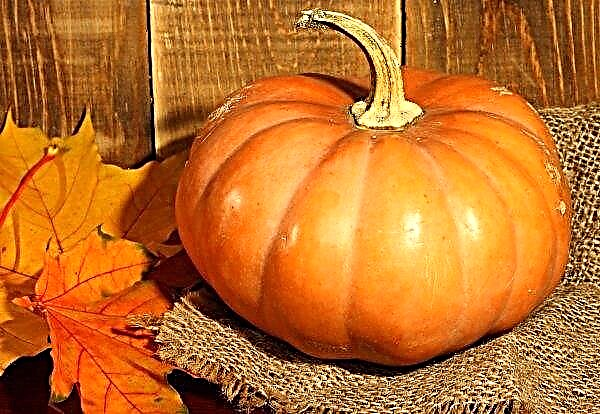Many novice poultry breeders who have decided to breed chickens are interested in how fertilization occurs in these birds and why roosters trample chickens. Let's look at these issues in more detail.
Why does a cock trample a chicken
Chickens, like many birds, live in packs. This is usually a group of several chickens and a leader cock. A rooster tramples chickens, the end result of which is fertilization. We will deal with this issue in more detail.
What to do if the cock peeled off the back and sides of the chicken
The rooster is able to stomp chickens almost constantly, regardless of the time of the year and several times a day. But first, the process of flirting takes place - the male performs his ritual dance, spins around the female, lowers the wing. Then he jumps onto the chicken and begins to stomp it, and with his beak, the cock can grab the feathers on the back of the head, back. It happens that the plumage and skin of the female suffer from the claws and beak of the male, and significantly. In this case, it is better to isolate the female, treat the wounds with an antiseptic solution (Chlorhexidine, hydrogen peroxide), and then smear it with a wound healing ointment (Zinc, Healer) until the skin is completely restored.
Important! Watch for the size of the claws of the rooster: if they are very large, then it is better to cut them to avoid the appearance of wounds in chickens.
How does the mating process go?
Stomping chickens with a rooster is done for a specific purpose. The thing is that it is thanks to such actions that mating and further fertilization take place. When a rooster tramples a chicken, she opens a cesspool, which is under the tail. During stomping, the cesspool turns out, and already in this state the testes of the male come into contact with it. At the same time, seminal fluid is secreted from them, which is stored in the female genital tract for 3 weeks, so all eggs laid by this chicken will be fertilized. The copulation process is very fast, and can occur several times a day.
How to check if eggs are fertilized
If you want to get chicken offspring, you must make sure that the eggs that you plan to lay under the hen have a germ, otherwise you will not wait for chickens. To make sure that there is an embryo, you need to look at the egg in the lumen.
This can be done in the following ways:
- take advantage of the bright light from a conventional lamp;
- to get an ovoscope - a specialized device for illumination.
Did you know? There are cases of the appearance of eggs with two yolks, but you will not wait for twin chickens from such an egg - the two chickens are simply cramped in one shell, which will prevent them from fully developing.
Checking eggs with light must be done in the dark. In this case, the egg is placed towards the light with a wider end, tilted slightly and carefully examine its insides. Inside the egg, approximately in the center, you should see a small clot consisting of blood vessels. If it is not, then it makes no sense to lay such eggs for breeding chickens. It may happen that you do not find any clot in the center, but you will see a reddish trace along the contour of the yolk. This means that for some reason the embryo died and such an egg is unsuitable for further use.
How many chickens do you need per cock
Before you start breeding chicken, you need to make sure that your rooster has the strength to fertilize every chicken. Experienced poultry farmers recommend that there are at least 10 chickens per male. A slightly larger number is allowed, up to 15 females. If the chickens are more than 20, then you need to think about acquiring a second cock.
These indicators are recommended when you need almost 100 percent fertilization. But if you do not plan to keep a large number of chickens, then one male representative in the domestic poultry yard is quite enough.
Important! The chicken will be carried without a male, and the eggs in this case will also be useful and nutritious for humans, but you can only get offspring if you have a male.
How to choose a rooster
An important factor in the successful fertilization of laying hens is the correct choice of a rooster, which will not only ensure the appearance of chickens, but also will be an adornment of a chicken flock.
The selection tips are as follows:
- it is best to choose a male at the age of 5-6 months of age when he has puberty;
- pay attention to the appearance of the future leader of the pack: the crest should be fleshy, the legs are even, and the fingers are of the correct shape;
- check the development of cock spurs, but be aware that the longer the spurs, the older the cock;
- observe the behavior of the male, his character: he must have a lively temperament, be bold and cocky, but not an aggressor that attacks all birds and even people;
- An important quality of the leader in the flock is his concern for his layers, which is expressed in the protection of the habitat and food sources from other birds.
How to prevent roosters fighting
When several roosters live in the poultry yard, fights will occur between them, since such behavior is characteristic of these birds. The task of the owners is to prevent strong aggression and bloodshed. Fighting between young males is a necessary thing, so their temper is tempered. But fights between mature males are best avoided, as they introduce confusion in the flock, leading to a decrease in egg laying. To prevent quarrels between males, adhere to their optimum number, provide all birds with free access to feeders and drinking bowls, and also divert the necessary territory. As practice shows, if such conditions are ensured, then over time, each rooster will form its own groups of chickens and fights are minimized.
To prevent quarrels between males, adhere to their optimum number, provide all birds with free access to feeders and drinking bowls, and also divert the necessary territory. As practice shows, if such conditions are ensured, then over time, each rooster will form its own groups of chickens and fights are minimized.
Did you know? If the cock cannot stretch its neck, then it cannot crow. People can hear the cock cry at a distance of 2 km.
Now you know how chickens breed and why a rooster tramples a chicken. If you decide to breed these birds, then just provide the birds with good care and nutrition, and nature will do the rest for you, and soon your chicken farm will replenish with small chickens.












